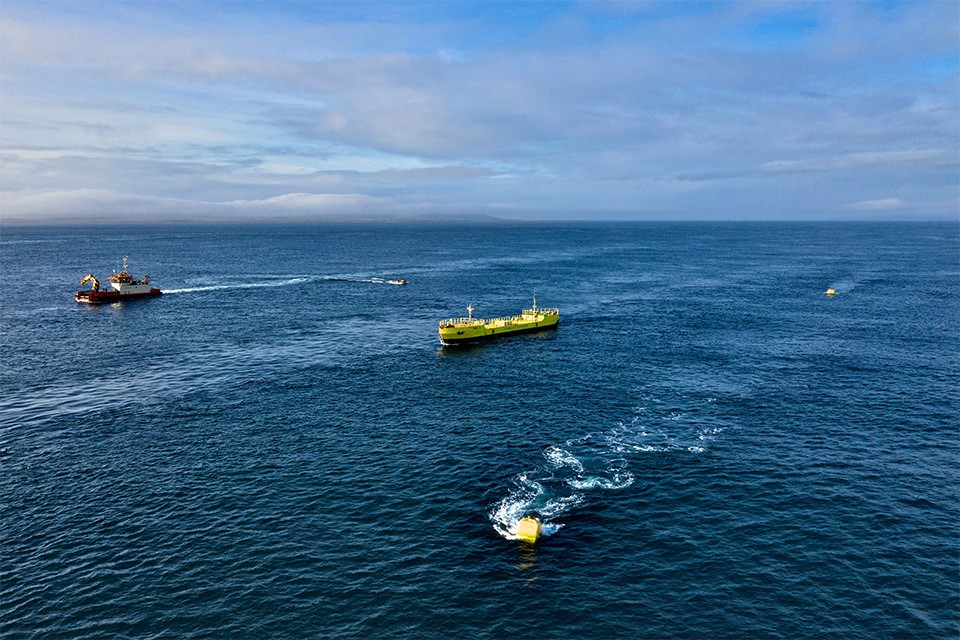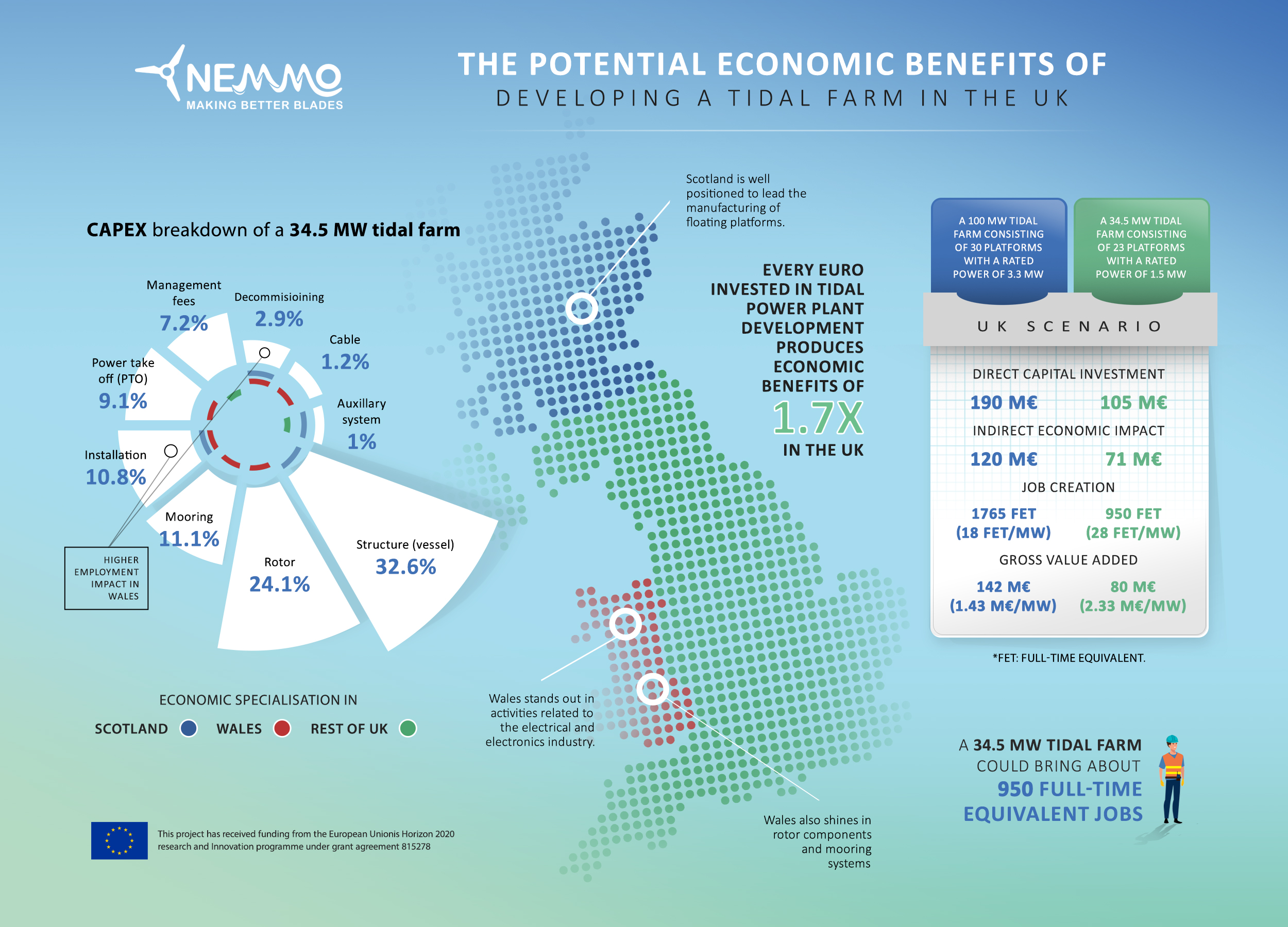Last updated: 4 August 2023
Engaging stakeholders is a necessity for the successful implementation of any project. To identify the possible socio-economic impacts that may arise during the NEMMO project’s lifecycle, the NEMMO project team has recently conducted a socio-economic assessment (SEA). This SEA looks into the socio-economic impacts of the NEMMO project innovations on the UK economy and both the Welsh (Morlais tidal site) and Scottish (Fall of Warness tidal site) local economies. The report also reveals the responsibility and commitment of the NEMMO project to the local community, not just in complying with the current legislation, but also in striving for a continuous improvement through the establishment of initiatives that promote working and living standards.
Socio-economic impacts of the Morlais tidal project
The Morlais project was included in this assessment, as Magallanes Renovables, the manufacturer and installer of the blades in the NEMMO project, has been actively involved in implementing the necessary infrastructure for tidal energy at the Morlais site in Wales. Morlais is a Menter Môn project which aims to help tackle climate change by supporting renewable energy projects, in order to generate clean low carbon electricity. Thus, Magallanes Renovables and Menter Môn employees have participated in the survey.
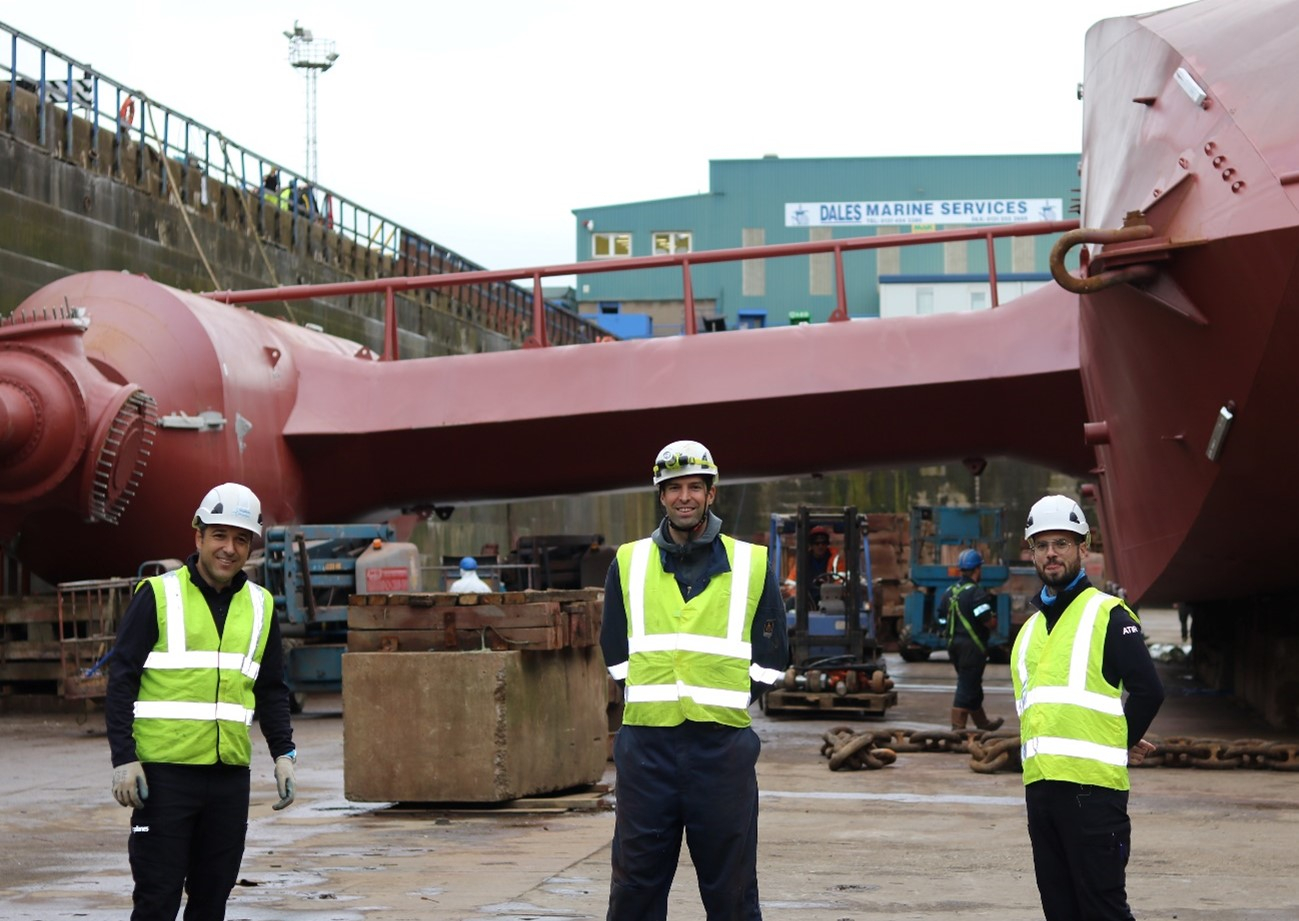
According to the survey, it can be ensured that through the Morlais project, Menter Môn has a clear focus on promoting local community empowerment and driving social transformation in the area. Morlais is contributing to economic development in the area, by hiring local people and establishing a portal to coordinate stakeholder meetings and working groups, including supply chain, skills and employment, etc. These actions will maximise employment opportunities for local people and businesses, and will provide solutions for identified skills gaps.
The learnings from the Morlais project show that making sure tidal farm projects support local development is key to securing the support of civil society and, ultimately, ensuring a smooth project development.
The driving economic activities of a potential tidal farm
To gain a deeper understanding of the socio-economic impact, it is essential to examine the current activities in the local area. After looking into the different components of the NEMMO tidal farm, the project team has identified the fundamental economic activities that will be required for the development of the tidal system. The construction of the floating platform is the most significant economic undertaking in terms of economic impact or investment, representing one-third of the cost of producing the NEMMO system. This will be followed by the production of rotor components, and then thirdly the moorings and electrical cable systems.
This report illustrates interesting results concerning the various components of the NEMMO system and their effects on the economies of Scotland and Wales.

The supply chain capacity of the Welsh and Scottish economies
Through various supply chain activities, the development of a tidal farm may benefit either Scotland or Wales but with very different patterns according to the respective sectoral specialisation.
Scotland is well positioned to lead the manufacturing of floating platforms.
Scotland appears to be well positioned to lead the industrial activities linked to the manufacturing of the floating platform, which is the most significant economic activity in terms of economic impact, thus generating significant local socio-economic impacts in this sector.
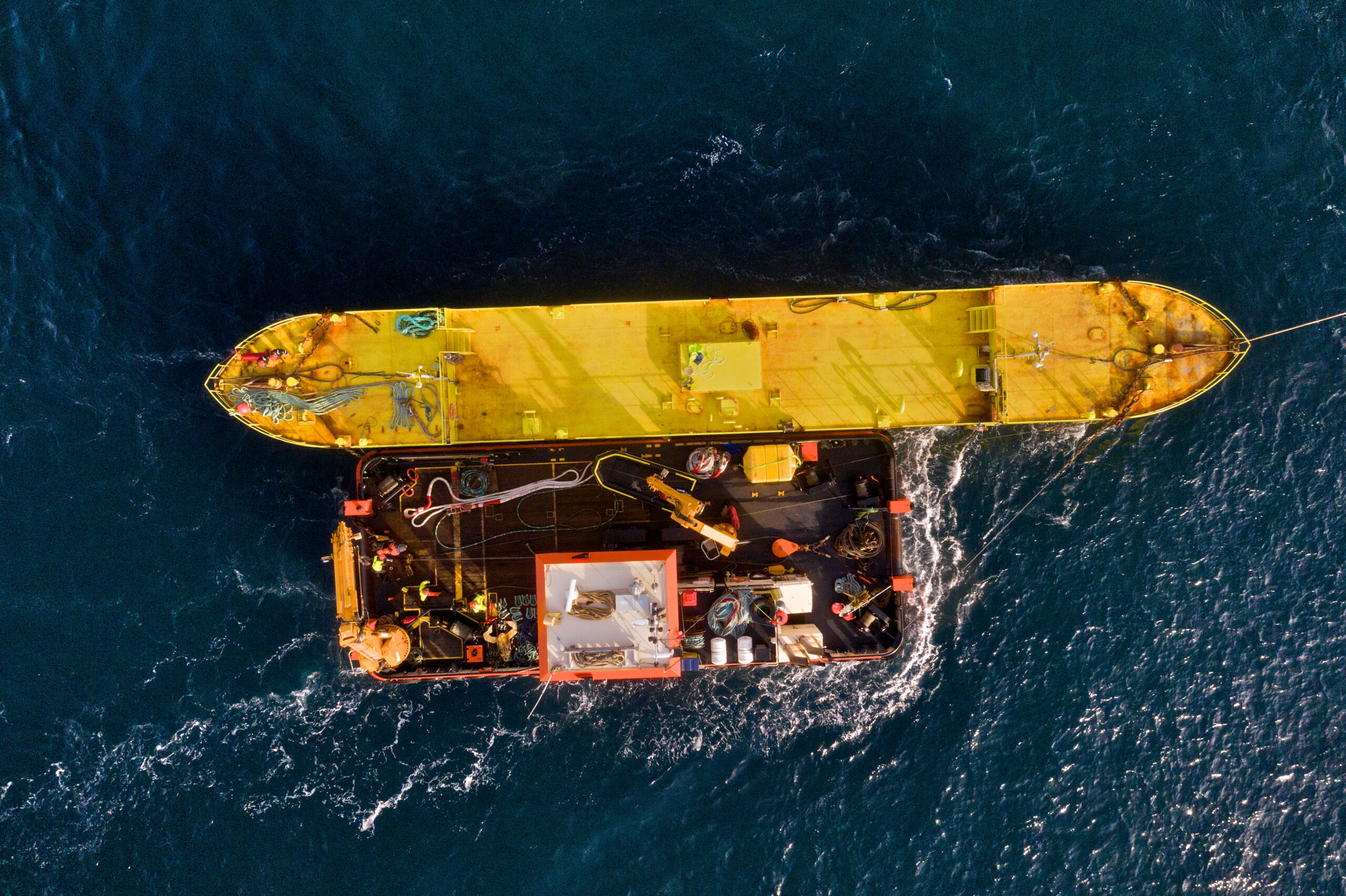

Wales stands out in activities related to the electrical and electronics industry.
Wales seems much more specialised in activities related to the electrical and electronics industry, such as the production of electronic components, other electronic and electric wires, and cables. As a result, the manufacturing activities of power take-offs and the (cable) electricity system has significant local socio-economic impacts in Wales.

Wales also shines in rotor components and mooring systems.
The production of rotor components is the second most significant component in the tidal system, after the floating platform. Wales is more specialised in activities related to the production of rotor components and mooring systems. Therefore, the local economic impact will be significant in the Welsh scenario.
In addition, the manufacturing of metal structures, and the parts for them, is among the industries with the most workers – 4,000 in Wales, and 51,000 in the UK overall. Investing in this sector would be a leading impetus for the acceleration of both local economies.
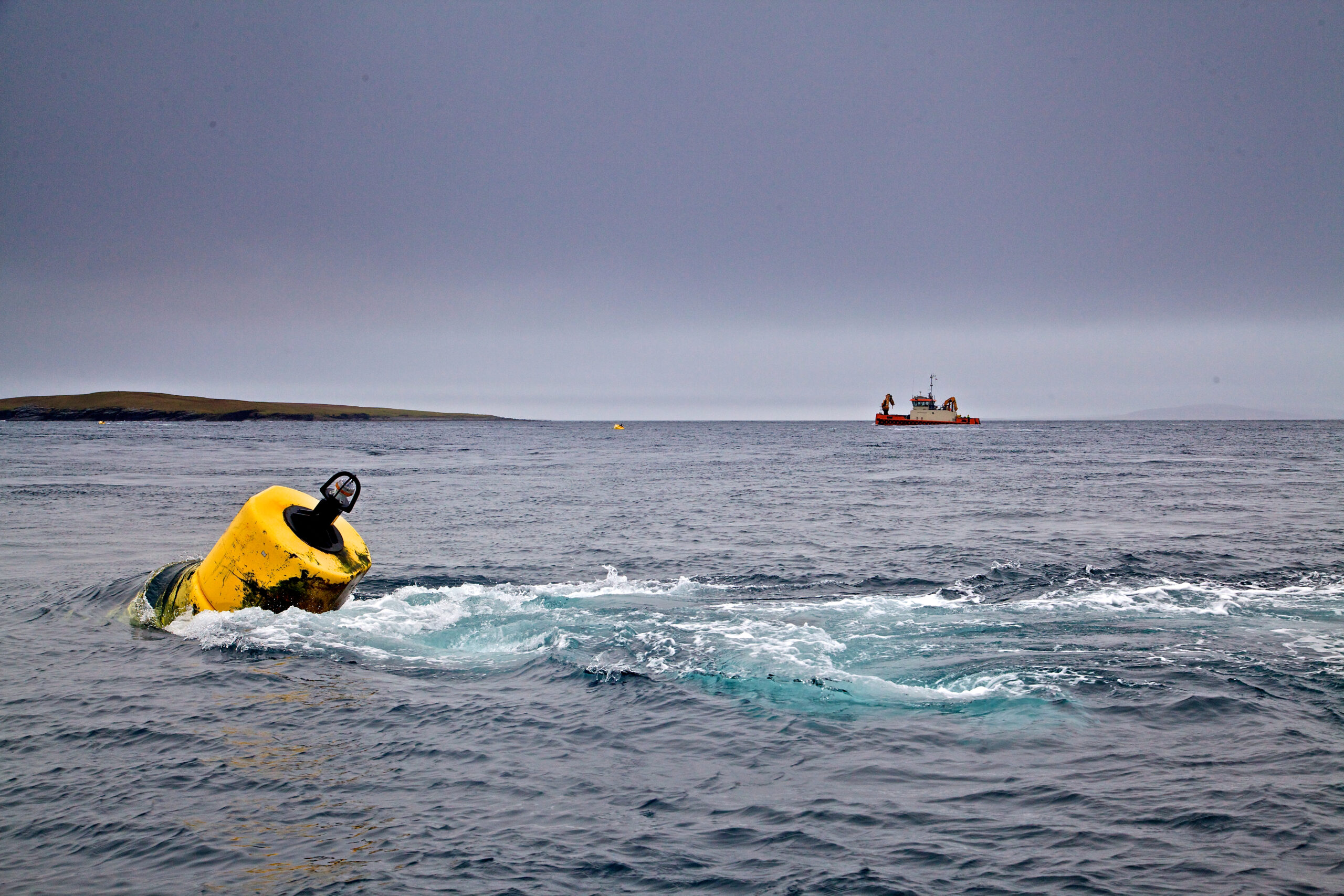
Every euro invested in the tidal power plant development produces a 1.7x economic benefit to the UK.
Taking into account potential tidal development sites in Scotland at the Fall of Warness and in Wales at the Morlais, two scenarios were developed to assess the potential economic benefits of the tidal project:
- A 34.5 MW tidal farm consisting of 23 platforms with a rated power of 1.5 MW.
- A 100 MW tidal farm consisting of 30 platforms with a rated power of 3.3 MW.
In the 34.5 MW scenario, it is foreseen that a direct capital investment of €105 million is estimated to generate an indirect economic impact equal to €71 million. With 100 MW of installed capacity, the indirect impact would exceed €120 million and direct investment would be €190 million.
The relatively high indirect effects are due to the UK’s high multipliers, which average out at 1.7.
This means that every euro spent on the tidal power plant development has an amplified effect on the UK economy of 1.7 times the direct investment.
To put it another way, for every euro invested in, say, device manufacturing, installation, management, and commissioning, an additional 0.7 euros is spent on items directly related to the power project.
Of the economic activities, those with the greatest “leverage effect” in this scenario are ship-building and floating structures, and those related to construction and installation.
In addition, it is estimated that the 34.5 MW scenario could bring about 950 full-time equivalent (FTE) jobs, while the 100 MW scenario could be responsible for 1,765 FTE jobs. This translates to 28 and 18 FTEs per MW respectively, thus indicating that the increased productivity gained through economies of scale and learning effects would save on roughly 10 personnel per MW for larger projects.
What’s more, the Gross Value Added of the 34.5 MW and 100 MW scenarios respectively stands at €80 million and€ 142 million. This means that for each MW installed, the additional value created in the 34.5 MW scenario is €2.33 million and in the 100 MW scenario is €1.43 million.
The evaluation of the 34.5 MW and 100 MW scenarios also showed an increase in compensation (income) of €52 million, or €1.51 million per MW installed; and €92 million, or €0.93 million per MW installed respectively.

Scotland scenario: developing a 34.5 MW tidal farm would bring considerable benefits to the Scottish economy.
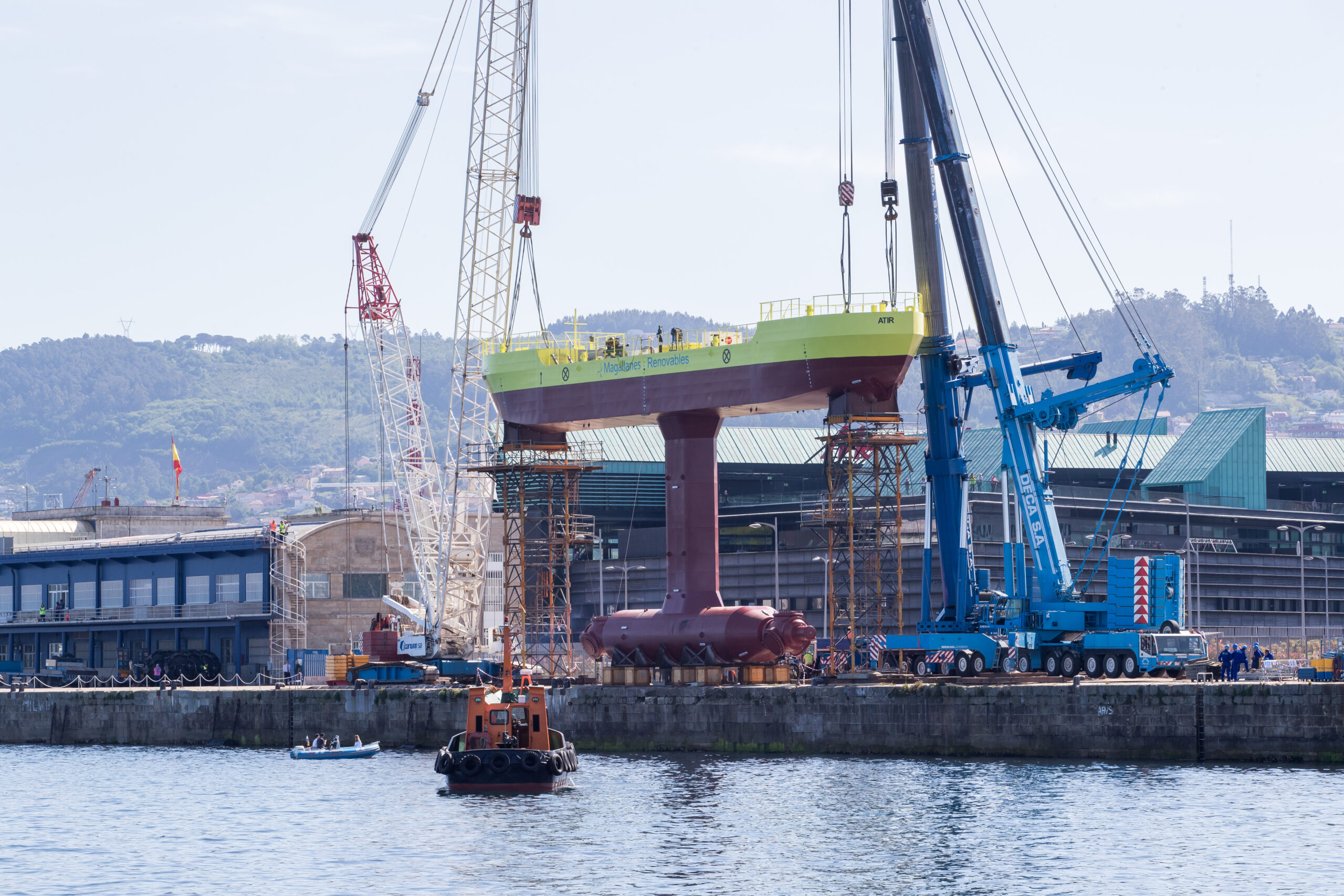
This report also considers an ad-hoc scenario, in which a 34.5 MW tidal farm is developed at the Fall of Warness in Scotland, given the significantly higher speed of tidal current compared to the Morlais area in Wales. Moreover, a lack of modelling data for Wales makes it impossible to estimate the economic benefits to the local region.
In this scenario, it is estimated that the Scottish economy would benefit from a gross economic output of €72 million, while the rest of the UK economy is predicted to receive a sum of €87 million. The construction of ships and floating structures would undoubtedly be the most beneficial economic activity for Scotland. In this activity alone, Scotland would experience a local impact of €38 million, twice as large as the national impact of €15 million.
On the other hand, economic activities dealing with the production of rotor equipment would have a higher impact on the UK economy as a whole than the Scottish economy. This is due to Scotland’s comparatively low specialisation in activities associated with concrete products for construction and metal/metal structure production. Similar findings apply to the mooring system. Consequently, Scotland appears to be comparatively unsophisticated in the economic activities related to this CAPEX, thus fewer local impacts are anticipated.
In terms of local job creation, it is reckoned that the creation of 451 FTE jobs would be realised locally, with a further 491 FTE jobs being created in the UK as a whole. As mentioned above, the main driver for job creation in Scotland would be the construction of ships and floating buildings, which will create 188 FTE jobs a year; followed closely by the construction and installation sector, which would generate 63 FTE jobs a year; and activities in the field of rotor manufacturing, which would generate 56 FTE jobs a year. It is interesting to note that, despite Scotland’s minimal specialisation in rotor-related activities, its significant CAPEX share still makes it a crucial element for the local economy.
In addition to local jobs, rotor manufacturing is anticipated to have an economic impact of up to 170 FTE jobs at the UK level. This is the most important CAPEX driver of socio-economic impacts in the UK, followed closely by activities related to the production of moored systems (78 FTE jobs) and the construction of ships and floats (62 FTE jobs).
Conclusion
In the event of these scenarios being realised, the development of tidal energy technology in the Scottish waters (Fall of Warness tidal site) and in Wales (Morlais tidal site) could be of tremendous socio-economic benefit to the local economies, and to the UK on a national level.
To conclude, this study has helped the NEMMO project understand the socio-economic impacts and longer-term opportunities for the local economy, related to the expansion of the tidal energy sector. The study on the job creation, the gross economic output and the gross value added, as well as the income changes, for both the Welsh and Scottish economies, can be used as a useful starting point for further evaluation of the impact of tidal energy projects.
